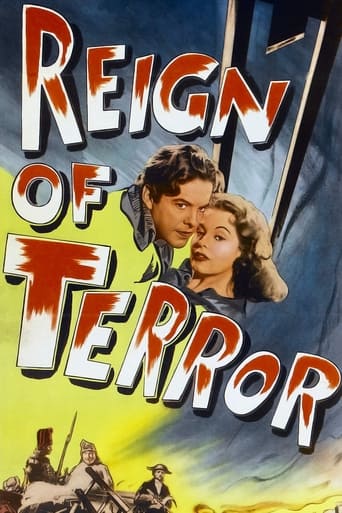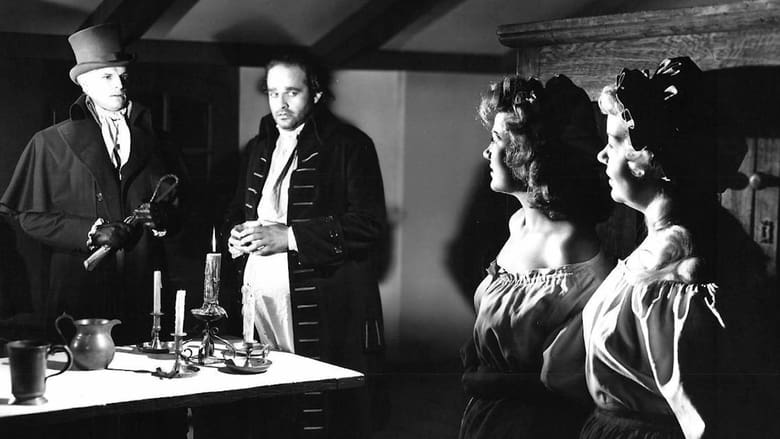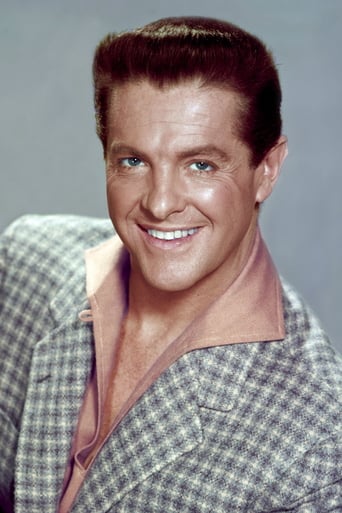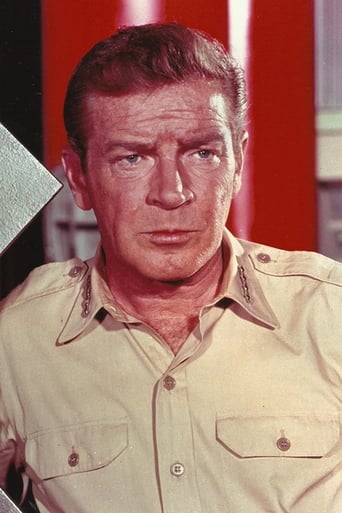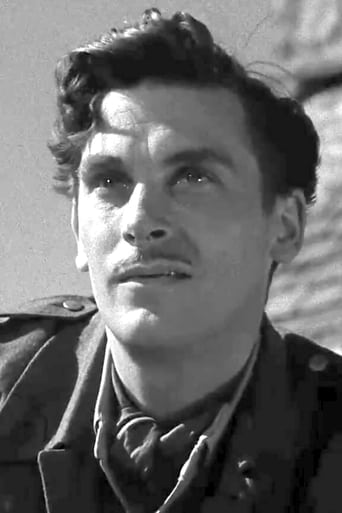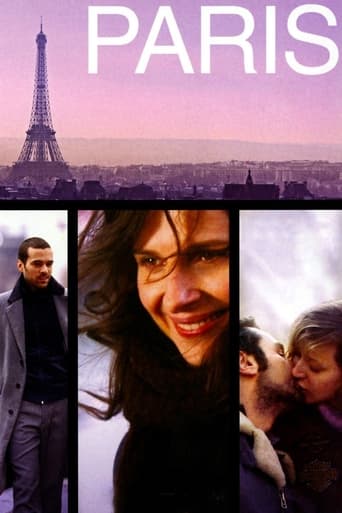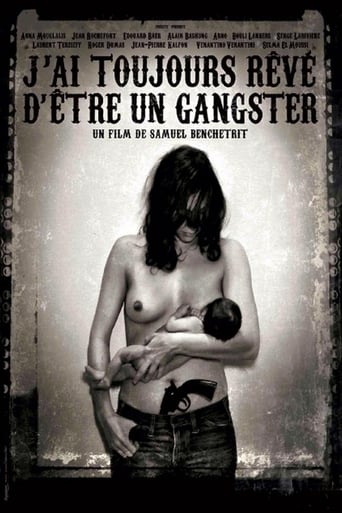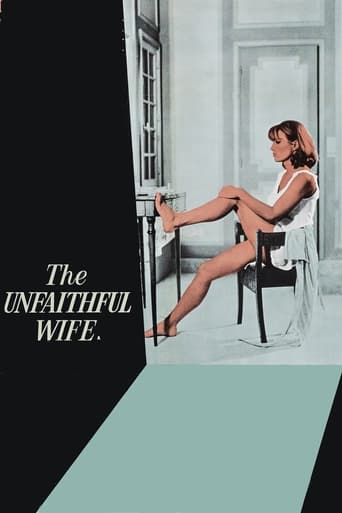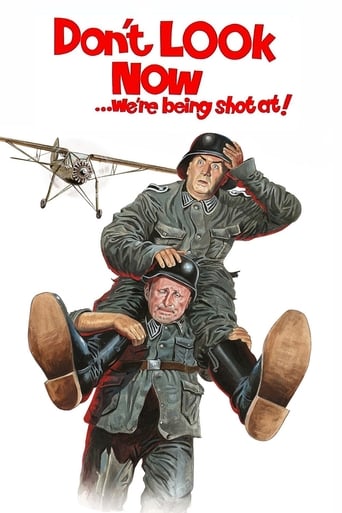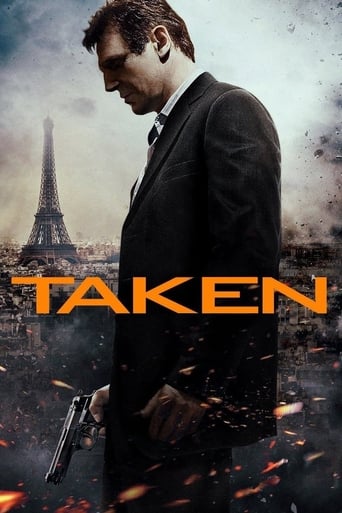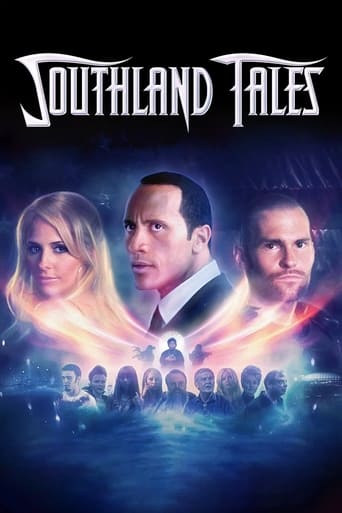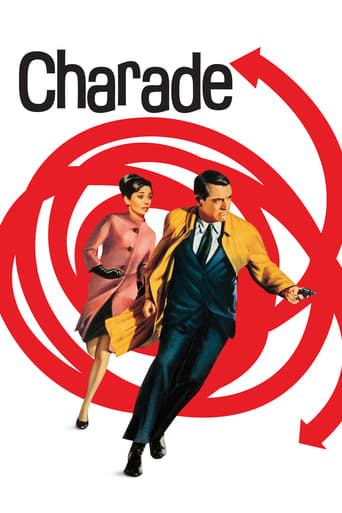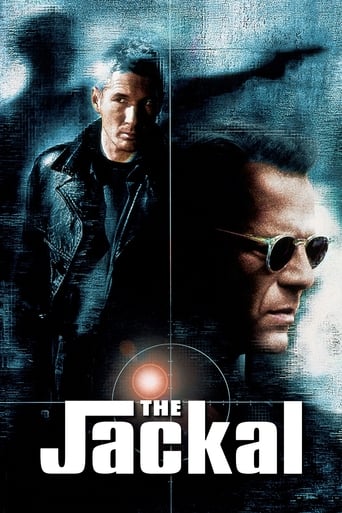Reign of Terror (1949)
The French Revolution, 1794. The Marquis de Lafayette asks Charles D'Aubigny to infiltrate the Jacobin Party to overthrow Maximilian Robespierre, who, after gaining supreme power and establishing a reign of terror ruled by death, now intends to become the dictator of France.
Watch Trailer
Cast


Similar titles
Reviews
good back-story, and good acting
Excellent but underrated film
The performances transcend the film's tropes, grounding it in characters that feel more complete than this subgenre often produces.
The plot isn't so bad, but the pace of storytelling is too slow which makes people bored. Certain moments are so obvious and unnecessary for the main plot. I would've fast-forwarded those moments if it was an online streaming. The ending looks like implying a sequel, not sure if this movie will get one
Despite some banal dialogue and one's initial difficulty in reconciling the wide variety of accents used by the cast, this is a film that will delight all classes of picturegoers. Few will quibble at the great liberties the script takes with history as the plot is a stirring and exciting one with hairbreadth escapes and an enormous amount of action and fast movement that will have all audiences sitting on the edges of their seats with excitement. Not only are the situations absorbing, but the characters are interesting and the players give performances that are both extremely competent and surprisingly ingratiating. Robert Cummings gives one of his most pleasing portrayals. Although he was usually cast as a likable stumblebum in light romantic comedies, Cummings actually excelled in dramatic costume parts (as this film and "The Lost Moment" so amply demonstrate) which rarely was he given the opportunity to play. Arlene Dahl is delightfully picturesque as the heroine and it is pleasing to note she doesn't hog the camera (a great deal of the time she is on screen you can hardly see her). She has not been introduced into the script as an afterthought of box office necessity, but has a role that is vital to the whole proceedings to play — and she plays it well! Basehart gives a riveting performance as Robespierre whom he portrays as a towering incarnation of monstrous brutality and evil, abetted by his henchmen, Saint Just (played with force and subtlety by Jess Barker) and the crafty, sly, satanic, self-confessed self-seeker Fouche (Arnold Moss in one of his most memorably malevolent portrayals). Norman Lloyd has a small part (on the right side for once) which he acts out in his usual slippery fashion. Despite his prominence in the billing, Richard Hart has only a small role as Barras. Other parts are very competently enacted and it is a nice surprise to find some of our favorite cameo players in unaccustomed costume roles — Victor Kilian as the turnkey, George Lloyd a member of the Convention, Beulah Bondi as Grand-ma. Charles McGraw figures prominently in the final climax.It was a violent era and there is a great deal of violence on the screen. The film could be frightening for children — doubly so because it is filmed throughout most atmospherically in very low key. Many scenes have very little light, the gloom and eerie shadows adding to the suspense. Mann's superlative choice of camera angles (Robespierre seems a towering figure because he is often viewed from a low angle — even in close-up) drives every emotive point home. Costumes and sets are dazzling and make an important contribution also to characterization (Robespierre in gleaming white, Moss in black, Cummings in gray) and even the plot (Cummings' adroit business with the wig). The whole film is handled with an inventiveness and a brilliance that is all the more enthralling for being so unexpected. It is absolutely jammed with the sort of shots that lesser directors congratulate themselves on using once or twice in their otherwise steadfastly banal and mercilessly dull picturizations. The use of mirrors, one of the key devices in Mann's earlier films, appears here in several ingenious and highly effective contexts. Mann can control crowd scenes with as great a dexterity as the most subtle and insinuating of dialogue exchanges and exhibits throughout his customary skillful use of natural locations. The whole film is crowded with shots (a knife from an unseen assailant at Cummings' throat as he steps inside a windmill; Robespierre placing a grotesque mask in front of his face reflected in a mirror as his wig is powdered and brushed; Fouche and Robespierre face to face in the torture chamber; the Prosecutor of Strasbourg preening himself in a mirror as a hand reaches from behind to clutch at his throat; the visitor lifting her veil in the candle-light) and scenes (Lloyd parrying banter with Cummings at a café while sitting in front of him idly eating olives; Robespierre raising his hands in a dramatic gesture to arrest the mob as they storm into his chambers; the eerie opening with faces like ghosts wrathing in the mists; the attempted escape from prison with the aged turnkey fumbling with the keys) that stay long in the memory.The script has some wonderful ideas — Robespierre's office in a bakery; Fouche asking Cummings if his name is in the book and his sudden and unexpected and unexplained attack — and it respects the intelligence of the audience by not explaining everything away or talking down or putting little patriotic speeches about the dangers of dictatorship into the mouths of its heroes. Certainly, it is implied, but, commendably, any parallels with present-day dictatorships are not overtly stated.Credits are first-class. Producer William Cameron Menzies has doubtless influenced the enormous, brooding sets with their atmospheric trappings and appointments, as well as Alton's impressive low-key photography (particularly shots like that of the silhouetted riders outlined on the rim of a twilighted hill). Editing is both sharp and smooth, the music score apt and deft. Production values are first-class.
The Black Book (AKA: Reign of Terror) is directed by Anthony Mann and written by Aeneas MacKenzie and Phillip Yordan. It stars Robert Cummings, Richard Basehart, Richard Hart, Arlene Dahl, Charles McGraw and Arnold Moss. Sol Kaplan scores the music and John Alton is the cinematographer.Late 18th century France and the republic is in chaos as the French Revolution continues to rage. Scheming bad boy Maximillian Robespierre (Basehart) spies an opportunity for a dictatorship, within 48 hours he will seize control and rule France with a rod of iron. But there is hope in the form of a resistance freedom fighter named Charles D'Aubigny (Cummings), if only he can locate the secret Black Book belonging to Robespire then he can curtail the tyrant's plan.Before he would make his name in Adult Westerns and Period Epics, Anthony Mann made a considerable mark on film noir. From the mid 1940's to the beginning of the 50's, he made a number of film noir movies that marked him out as a considerable talent. Of that cluster the most odd one is The Black Book, an historical period thriller done out in film noir clobber. Forget history and approach the film as a piece of entertainment only, a film rich in film noir visuals and no small amount of quality drama. It has problems, namely it has a fakeness about it that's hard to shake off, while Cummings is weak and Dahl serves only to be a plot point in the final reel. But Alton and Mann's stunning sense of mood and visual atmospherics save the day, while there's value to be had in the performances of Basehart (dastardly), McGraw (menacing) and Moss (slimey). 7/10 Footnote: Sadly the only DVD available for the film is an appalling transfer, both in picture and sound. It's advised to watch it during daylight hours and with the headphones on.
This film, beautifully wrought (cinematographer John Alton must be responsible for much of this), makes me long to return to the days of black and white films and the stunning art that can be made in shades of gray.From the first shot of a tiny distant rider silhouetted against massive lowering storm clouds, we are pulled into the mood of the film. The smallness of the rider is the smallness of the protagonist in the face of the overpowering events of the French Revolution. The use of light and shadow, the low shots and unusual closeups of actors: all of this made me feel I was in the hands of a master of his art. My breath was literally taken away by many of these images.The story is serviceable and the acting quite good, but what sticks with me is the imagery of the film, the beauty of it.
The film is about a little black book that is in Citizen Robespierre's possession. This leader during the so-called "Reign of Terror" was a cold fish who consigned many--including his good friend, Danton, to the guillotine all in the name of patriotism. It seems in this movie that the Citizen actually has a master plan to wipe out everyone around him--it's hidden in this book and it is important to find the book and reveal to everyone the evil hit list. It's up to secret agent Bob Cummings to find it and convince everyone of the danger the nation faces.There have been some exceptional films about the French Reign of Terror (in the 1790s), such as THE SCARLET PIMPERNEL, A TALE OF TWO CITIES and DANTON. Because these films were so good, it made it much tougher to watch and enjoy REIGN OF TERROR. Sure, it was a good film, but compared to these great films it pales in comparison. Much of it is because there really isn't much in the way of character development and the actors could have just as likely been in a movie set in an entirely different time period. Overall, it's pretty much just a time-passer and an actor I usually love in films (Richard Basehart) is pretty bland as is the lead, Bob Cummings.

